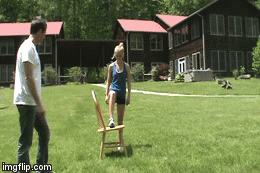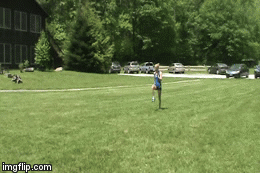Step-Ups
A lack of quadricep stability and the failed firing of the gluteus (particularly the gluteus medius) are directly connected to a myriad of common "mid-body" injuries, from a weak TFL hip muscle to simple hip instability. In fact, these are commonly the root of a range of injuries up and down the kinetic chain. This simple step-up drill engages the hamstrings and glutes and adds a measure of stability.

- Stand directly in front of a platform, bench or chair roughly 14 to 18 inches tall, depending on your height. Prop one leg on the chair with your foot flat on the platform.
- Use your front leg to pull your body up onto the platform, driving your opposite knee into a high drive step position. Hold the drive position briefly with the knee in the air.
- Return to a full standing position in front of the platform, by stepping the leg with the high knee back onto the ground, followed by the opposite leg.
- Do the next step-up with the alternate leg. Repeat 4 to 5 times on each leg. Perform this exercise 2 to 3 times weekly after a run.
A-Skip
The hip flexors are often a distance runner's kryptonite. These muscles provide your power for your follow-through, stabilize your quads and aid in the ability to drive your knees. Those who fail to strengthen their hip flexors often succumb to common distance running injuries, including IT band strains, hamstring pain and quadricep instability—which often leads to knee issues. The easiest way to engage the hip flexors is to execute this simple "A-Skip" drill 2 to 3 times per week.

- Start by bringing your knee up to a 90-degree angle.
- Hop twice quickly on the rear leg.
- Pull your front leg down quickly and engage the next skip with the alternative leg.
Skip for 15 to 20 meters for 3 to 4 sets.
Connect with us on Twitter, Facebook, Instagram or Pinterest for more tips, recipes and ideas to fuel your ACTIVE life.
 Find your next race.
Find your next race.


